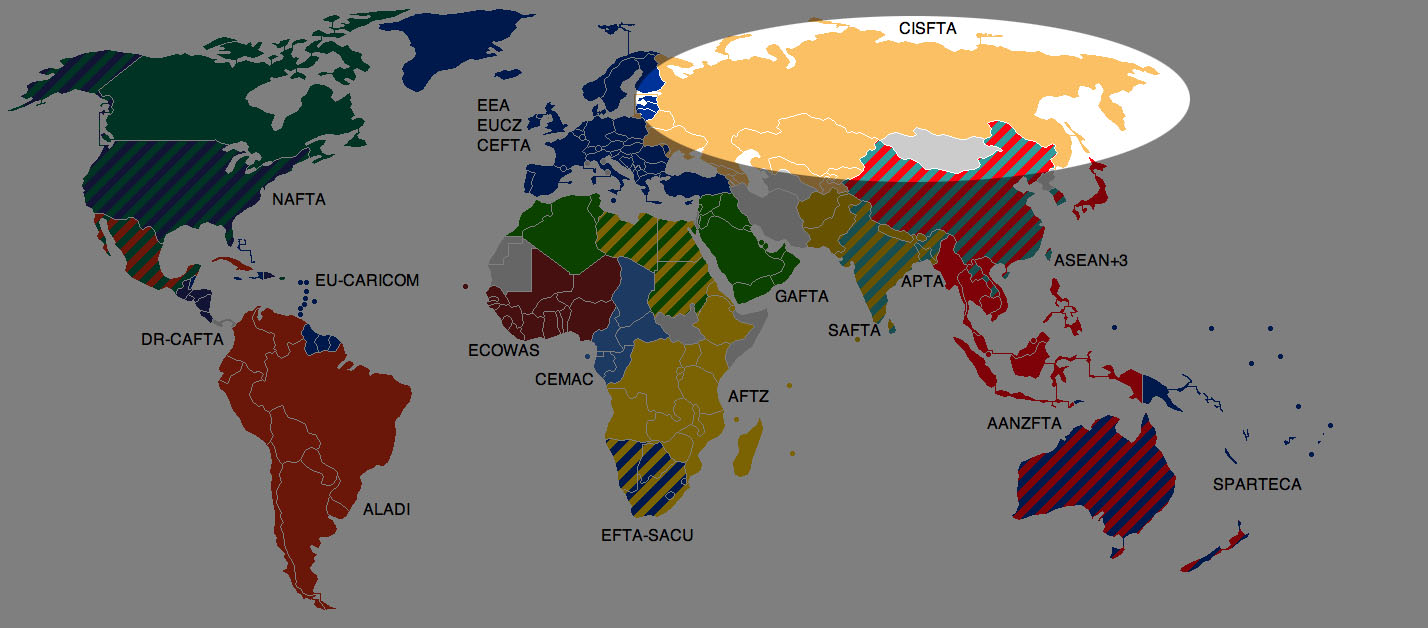The early 1990s saw drastic changes in
global politics, trade, and geography in Europe and parts of Asia.
With the dissolution of the Soviet Union, numerous independent states
became recognized, and many would form an association of sorts to
promote trade and financial support with each other and outside
nations. The Commonwealth of Independent States, formed for the
purpose of maintaining friendly relations among former Soviet
territories, sought to create free trade boundaries with member
nations, though this agreement was never officially ratified. Only
recently have CIS nations consented to a formal trade agreement which
will impact all members involved, in particular the Ukraine, which
also seeks a relationship with the European Union.

CISFTA Member Nations
Officially, only eight nations within
the Commonwealth of Independent States are involved in the current
free trade agreement:
Russia - Within the CIS, the
Ukraine and Belarus are Russia's major trade partners. Known for
its mining and agricultural industries, Russia exports iron ore and
precious metals, as well as various machinery.
Ukraine - Ukraine is a major
producer of coke and coal, and exports a good percentage of their
petroleum and chemical output to Russia, the United States, and
Germany.
Belarus - Largely industrial,
Belarus relies on trade relations with Russia and the Netherlands as
they export vehicles and machinery.
Kazakhstan - A smaller economy
within the CIS, Kazakhstan produces on average 65-70 million tons of
oil and gas condensate annually.
Kyrgyzstan - Kyrgyzstan
encountered difficulties economically following the dissolution of
the Soviet Union, but continue to grow slowly. Main exports include
precious metals and hydropower.
Tajikistan - Turkey and Russia
are major exports partners and benefit from Tajikstan's production
of aluminum and cotton, among other agricultural crops.
Moldova - Moldova has struggled
post-dissolution to establish a foothold in global trade beyond
Russian borders, but has managed to export food and textiles to
Turkey, Romania, and Germany.
Armenia - Metals and mineral
mining are prime industries in Armenia. Russia, Bulgaria, and
Germany are among their top trading partners.
Current Issues Within CISFTA
Foremost in the media regarding the
CISFTA agreement is Ukraine's role and the effect, if any, it will
have on relations with the European Union. While Ukraine's
involvement in CISFTA should not negatively impact the deep and
comprehensive free trade agreement with the EU, it should be noted
that both treaties are important to the country. According to
OdessaTalk, the bulk of Ukraine's trade, little over forty percent,
is concentrated within the CIS borders. Trade with European Union
members holds just under thirty percent, but could have the potential
to grow. Should this potential be realized, one may find other member
nations of CISFTA taking advantage of such a relationship.
Compatibility of CIS nations with the
procedures of non-member nations is key in forging successful trade
relationships beyond the old Soviet borders. It is worth watching
Ukraine closely to see if others in CISFTA follow suit.